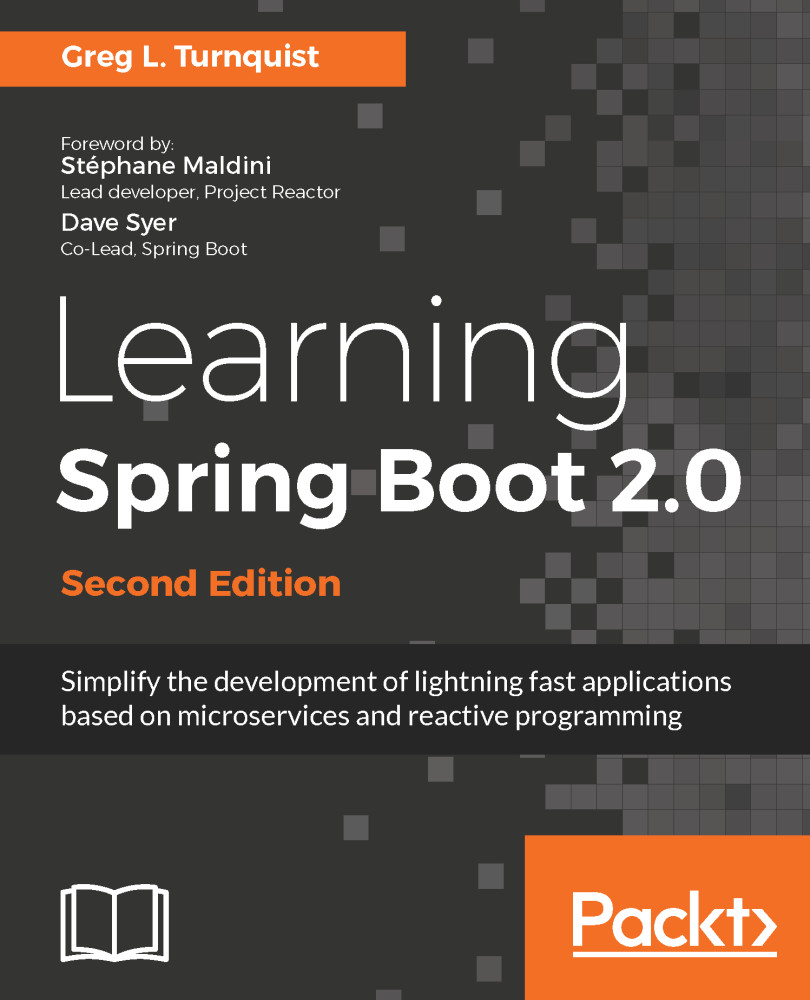I owe @springboot a lot. #productivity #engineering #sota #minimalist #microservices #performance #quality #bestpractises
– Amir Sedighi @amirsedighi
In the previous chapter, you learned how to use Spring Boot's various testing features. We saw how to craft simple unit tests, slice tests, mock WebFlux tests, and even fully spun-up embedded Netty integration tests.
When we get into the swing of things, anything that can bend the curve of time spent building an app is appreciated. We will explore the various tools Spring Boot brings to the table to help us hack away at our applications.
In this chapter, we will do the following:
- Using Spring Boot's DevTools for hot code reloading and decaching
- Glean what Spring Boot did with its autoconfiguration report
- Make local changes and see them on the target system
- Write a custom health...


